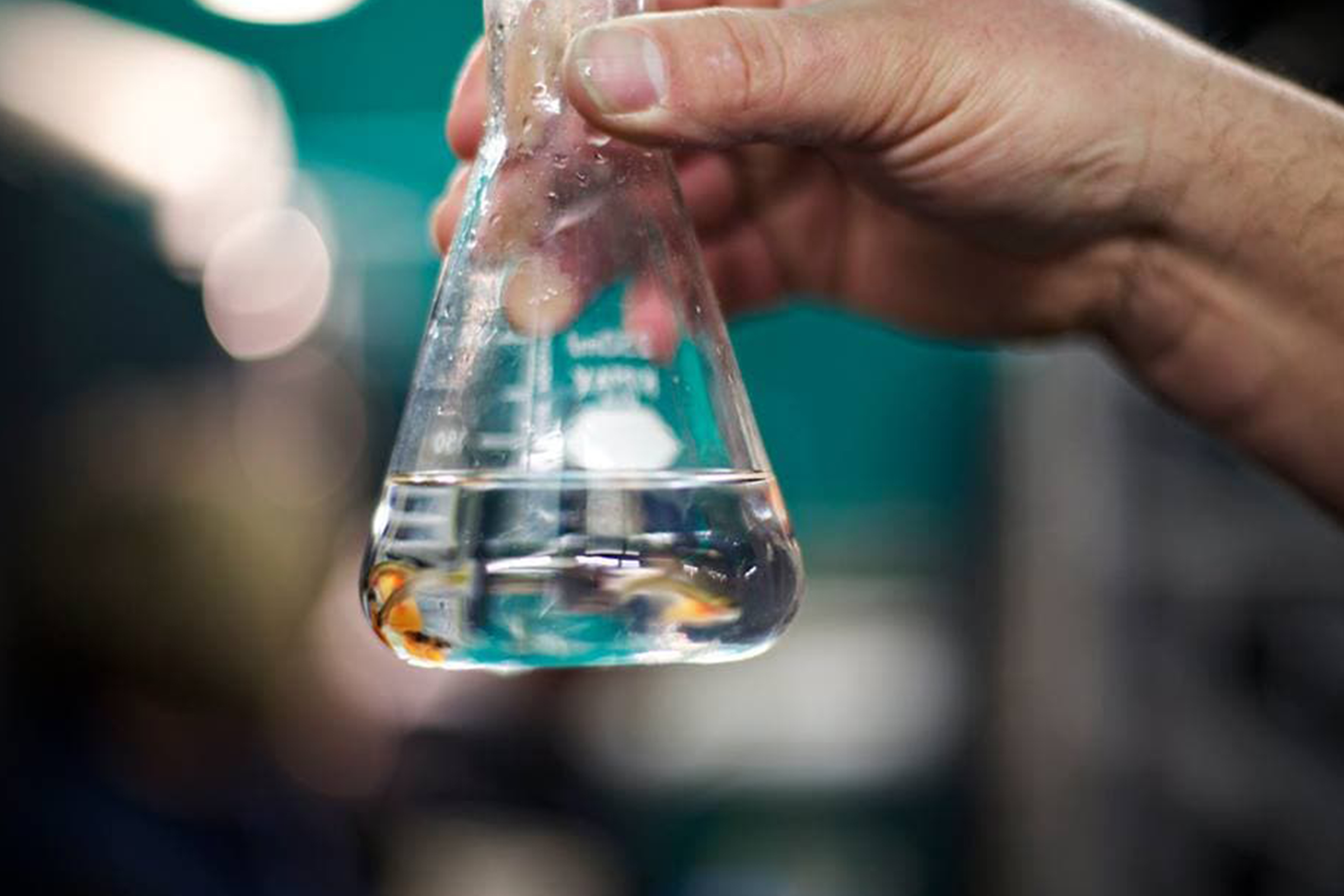Campbell River wet lab plan will lead to more scientific collaborations, help attract more students to higher educational institutions, and boost the local construction industry.
The planned wet lab facility in the Campbell River area to address a myriad of fish health concerns will serve as a catalyst for increased scientific collaborations and be a boost for the higher education and the construction industries on Vancouver Island. The wet lab is one of four Vancouver Island-based projects, which will be receiving a total of $2.2 million dollars under the British Columbia Salmon Restoration and Innovation Fund (BCSRIF).
The BC Center for Aquatic Health Sciences (BC CAHS) and partners, including the BC Salmon Farmers Association, will establish the wet lab facility to increase research and diagnostic capacity to identify and examine fish health threats and interactions between farmed and wild stock, the Department of Fisheries and Oceans said.
“It took some time but we got here,” said Dr. Jim Powell the CEO of BC CAHS, who has been working on getting this project off the ground since 2005.
“We showed a demonstrable need to build this facility and it’s become a reality because of the current political and biological realities,” Dr. Powell told RaisingOpportunity.ca.
”Having an operational wet lab here in Campbell River would be a tremendous asset to continue this critically important research and works very well with the City’s potential plans for a Salmon Centre of Excellence facility.
Andy AdamsMayor, Campbell River
“We are overjoyed that both levels of government share our vision and this wet lab will play a big part in Campbell River realizing its ambition to host a Salmon Centre of Excellence,” he said.
Campbell River Mayor Andy Adams had said the city is very supportive of work that the BC CAHS does in providing the region with science-based evidence for the sustainability of all fisheries whether it be wild, commercial, recreational, farmed or indigenous.
“Having an operational wet lab here in Campbell River would be a tremendous asset to continue this critically important research and works very well with the City’s potential plans for a Salmon Centre of Excellence facility,” he said.
According to Dr. Powell, the Level 2 Wet Lab is projected to be functional in the summer of 2021 and will be the only such private facility in Western Canada.
It is expected to create at least half a dozen direct jobs for lab technicians and project coordinators immediately.
“We are currently looking for a project manager,” said Dr. Powell, who expects the workload at BC CAHS to increase with the wet lab, necessitating more hires down the road.
In addition to boosting the local construction industry, the wet lab facilities will serve as a catalyst to attract local and foreign students for aquaculture studies at institutions like the North Island College and Vancouver Island University.
Dr. Powell said a social and cultural advisory committee which will include representatives from salmon habitat restoration groups, First Nations communities and the aquaculture and wild fisheries industries will guide the construction and operations of the wet lab.
“We will also be heavily invested in gaining and incorporating traditional First Nations knowledge to guide our work,” said Dr. Powell.
The BC CAHS is a non-profit organization in Campbell River B.C. with a state-of-the-art laboratory serving all stakeholders in fisheries and aquaculture, First Nations and the enhancement communities. It operates on a science-based model and adheres to a rigorous academic ethic.
In addition to the wet lab, Jonathan Wilkinson, Minister of Fisheries, Oceans and the Canadian Coast Guard together with Courtenay-Comox MLA Ronna-Rae Leonard announced this round of contributions for three other Vancouver Island-based projects under the British Columbia Salmon Restoration and Innovation Fund (BCSRIF).
The other three projects are led by:
The University of Victoria (UVic) which will support BC rockfish recovery and assessment through outreach and citizen-science emphasizing angler awareness of regulations (via the MyCatch app) and through an evaluation of the effectiveness of rockfish descending devices on reducing rockfish mortality. UVic will partner with academia, conservancy organizations and local First Nations.
The Cowichan Valley Regional District and partners, including the Cowichan Tribes, which will conduct an evaluation of the natural boundary of Cowichan Lake to support building critical new water storage infrastructure to provide flows required to sustain Cowichan salmon populations.
The Comox Valley Project Watershed Society, with the K’ómoks First Nation, North Island College and other partners, which will apply and test tools for identifying, mapping and quantifying important forage fish populations and their habitats. This work will contribute to the conservation of important food sources for Pacific salmon, including Chinook and Coho.
The British Columbia Salmon Restoration and Innovation Fund is a 70 per cent federal, 30 per cent provincial cost-shared program.
The Government of Canada is investing $100 million over five years for the British Columbia Salmon Restoration and Innovation Fund, and is providing a one-time investment of $5 million for the Pacific Salmon Endowment Fund.
“Working in partnership with the Province of British Columbia, I am confident that we can and are making substantive progress in protecting and enhancing our wild fish stocks and in strengthening our fishing industry for today, and for the generations ahead,” said Wilkinson.
Lana Popham, BC Minister of Agriculture said the four projects support wild salmon populations and habitat at different stages of their lifecycle and are the results of British Columbians from First Nations, governments, academia, and not-for-profit organizations working together.
Additional information on the 23 initial projects selected for BCSRIF can be found online here.
